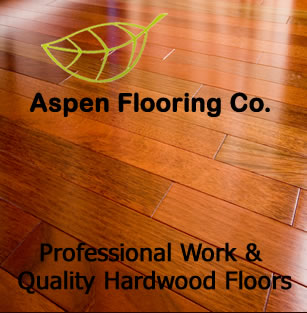





Expansion & Contraction
Unlike many floor coverings, wood floors can Last the lifetime of the building in which they are installed. Home owners who want them to last that long however, should note the number one enemy of a hardwood floor: moisture. Wood floors naturally expand when moisture Is present and shrink when It is not. Whether the reactions are a problem or not depends on the severity of the situation. Following are some of the common results when water and wood floors combine:
CRACKS BETWEEN BOARDS: Almost every wood floor endures some expansion and contraction as seasons and humidity levels change. When homes are heated, humidity levels plummet; boards shrink and spaces appear between the boards. In dry months, cracks can easily develop to the thickness of a dime on a typical solid 2 1/2, -inch oak floor, with light colored woods making the cracks appear larger. Plank floors also will show cracks more. These spaces are to be expected and usually close up as the season changes and moisture returns to the air. To reduce the degree of change, home owners can add moisture to the air during the dry months, Ideally by installing a humidifier in the furnace.
CUPPING: As with cracks between boards, both cupping and crowning are natural reactions to moisture and should not be a concern if they occur only to a minor extent. More severe cases, however, indicate a serious moisture problem. 
"Cupping" describes a condition in which the edges of a board are high and its center Is lower. Humidity is usually the culprit, although cupping also can happen after water has been spilled onto the floor and absorbed into the wood. The moisture causes the wood to swell, crushing the boards together and deforming them at the edges. In order to repair the floor, the cause of the Moisture must be identified. Most often, indoor humidity will have to be controlled. Other causes could include situations such as a plumbing leak in the basement, which can allow moisture to migrate up into the sub floor and the wood flooring.
Once the cause of the moisture is controlled, cupping usually can be reversed. Oftentimes the floor may naturally dry out and Improve over time. Fans may he necessary to speed the drying process. After the floor has dried, it may be necessary to recoat the floor with finish, or to sand and refinish the floor.
CROWNING: "Crowning" Is the opposite of cupping: The middle of the board is higher than the edges of the board.  This can occur when the surface of the floor encounters moisture. More often, it results when a floor has been sanded too soon after it has cupped. When this happens, the top edges of the board are sanded off, and thus are lower than the rest of the board when It returns to a normal moisture content.
This can occur when the surface of the floor encounters moisture. More often, it results when a floor has been sanded too soon after it has cupped. When this happens, the top edges of the board are sanded off, and thus are lower than the rest of the board when It returns to a normal moisture content.
BUCKLING: Buckling is one of the most extreme reactions to moisture that can occur with a hardwood floor. It happens when the floor literally pulls away from the sub floor, up to heights as high as several inches. Fortunately, buckling is an uncommon occurrence; usually happening only after a floor has been flooded. Even in such cases, it is possible that a floor can be repaired instead of being totally replaced.
Preventing Moisture Problems
Controlling humidity is the most important factor in preventing problems with moisture and your wood floor. The correct maintenance also will go a long way in avoiding problems. Among the key points:
Clean your wood floor with a cloth lightly dampened by a recommended cleaning product, using the manufacturer’s directions for use. It is best to buy a “floor care kit" recommended by your wood floor installer or retailer.
Do not clean your wood floors with water or water-based products on a regular schedule -- clean only when necessary and clean only the soiled areas.
Never damp mop a wood floor. The water deteriorates, the wood and the finish.
Never lot a water spill dry on the floor.